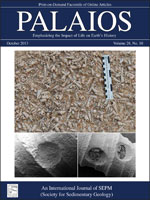The post-Paleozoic decline of the diversity and abundance of rhynchonelliform brachiopods has been attributed to a variety of factors. Of the possible mechanisms invoked to explain the evolutionary decline and cryptic or antitropical distribution of brachiopods, predation has frequently been dismissed due to the potentially low energetic value and suspected nonpalatability or toxicity of brachiopod tissues. Herein we demonstrate that multiple invertebrate marine predators (crustaceans, echinoderms, and gastropods) are willing and able to consume brachiopods in laboratory settings without observable negative effects after ingestion. In addition, field samples indicate predation pressure on the living brachiopod population may be substantial. Although feeding trials are consistent with previous reports that bivalves are preferred prey relative to brachiopods, predation should not be dismissed as a potentially important factor in brachiopod ecology and evolution. The results presented herein reveal that in some cases brachiopods may be the intended target of predatory attacks, especially in habitats where mollusks are rare or absent. Examination of the fossil record of predation on rhynchonelliform brachiopods is consistent with this interpretation: evidence for drilling and repair of brachiopod shells is found throughout the fossil record in multiple lineages. While it is likely that predation traces on post-Paleozoic brachiopods are generally rare, there are multiple reports of fossil localities with anomalously high drill-hole or repair-scar frequencies. This suggests that although brachiopods may be unwanted prey in the presence of energetically more desirable targets, they do appear to be edible and subject to intense predator-prey interactions under certain conditions.
How to translate text using browser tools
1 October 2013
PREDATION ON MODERN AND FOSSIL BRACHIOPODS: ASSESSING CHEMICAL DEFENSES AND PALATABILITY
CARRIE L. TYLER,
LINDSEY R. LEIGHTON,
SANDRA J. CARLSON,
JOHN WARREN HUNTLEY,
MICHAŁ KOWALEWSKI
ACCESS THE FULL ARTICLE
It is not available for individual sale.
This article is only available to subscribers.
It is not available for individual sale.
It is not available for individual sale.
<
Previous Article
|

PALAIOS
Vol. 28 • No. 10
October 2013
Vol. 28 • No. 10
October 2013




